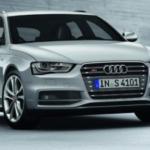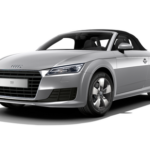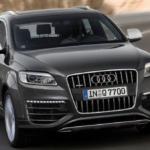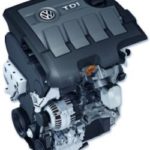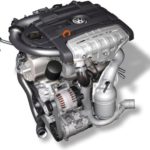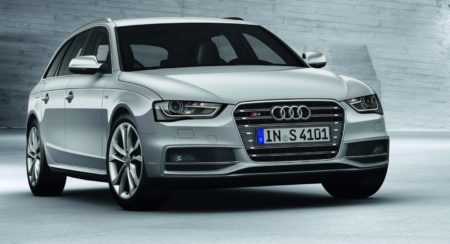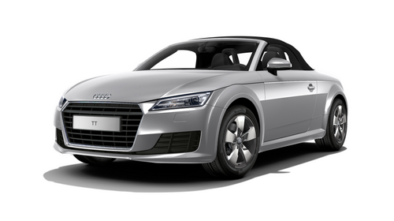Audi 80 1988 - 1995 - Used
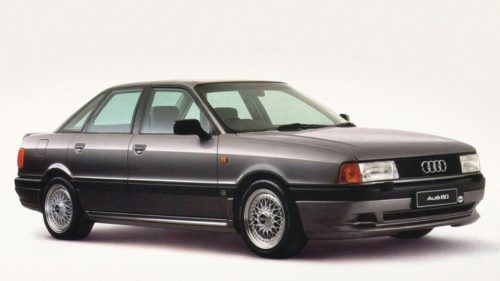
Audi 80
With the introduction of the new "eighties" in 1986, the middle hair of Audi began to differ significantly from Volkswagen. With the new body for the next two years, the "80" was stylistically ahead of the Passat by generation. The nice, compact body is galvanized and the corrosion problem in the previous model was finally solved.
An efficient car on the outside disappoints on the inside. Unfortunately, in the "eighties", given the car class, it is cramped. Perhaps this is due to the rather massive doors and seats, as well as the short wheelbase. In any case, Audi does not overcome the problems of either the driver or the passenger. The fact is that the other dimensions of the car are small compared to other mid-range cars. As a consolation, the "eighty" offers decent materials for upholstery and comfortable seats. The spare wheel is placed vertically on the left side of the trunk. It is also not possible to fold the rear seats, and this is not affected by the version of the car's equipment, but by the construction of the rear part of the body, because the fuel tank is placed vertically between the seat and the front trunk wall. The designers considered this arrangement the safest, pushing usability into the background. It was abandoned during the 1991 restyling.
An efficient car on the outside disappoints on the inside. Unfortunately, in the "eighties", given the car class, it is cramped. Perhaps this is due to the rather massive doors and seats, as well as the short wheelbase. In any case, Audi does not overcome the problems of either the driver or the passenger. The fact is that the other dimensions of the car are small compared to other mid-range cars. As a consolation, the "eighty" offers decent upholstery materials and comfortable seats. The spare wheel is placed vertically on the left side of the trunk. It is also not possible to fold the rear seats, and this is not affected by the version of the car's equipment, but by the construction of the rear part of the body, because the fuel tank is placed vertically between the seat and the front trunk wall. The designers considered this arrangement the safest, pushing usability into the background. It was abandoned during the 1991 restyling.
The Audi 80 B4 was available in multiple body styles: four-door sedan, five-door station wagon, two-door coupe and two-door convertible.
Audi 80 - Engines
The engines used were tested in other Vw Group cars as well as in the older Audi. The range of power was wide. The weakest, the base engine is a 1.6, develops from injection to 69 to 75 hp. The car with the 1.6 engine is only available in the front-wheel drive version. More powerful petrol units are also installed in cars with front-wheel drive and 4 × 4 (quattro). It was then and there is still something to choose from.
Attractive proposals are e.g. dynamic 2-liter engines, versions with 4 and 5 cylinders, although the latter is greedy for fuel. For fans of really fast driving, there are also 5-cylinder engines with a 2,3-liter volume - a weaker 133 horsepower and more powerful, produced in 4-valve technology, with 167 hp. In fact, from the beginning of the production of the model, it was a diesel: 1.9-liter atmospheric engine with 68 hp and 1.6 TD / 80 hp.
The construction of a car with basic gasoline engines is simple, making any repairs simple and cheap. 75 horsepower, however, is not very lively - cars equipped with them are quite suitable for city driving, and overtaking at high speeds takes a lot of time. 90 hp behaves better. In practice, a small difference is noticeable. The Audi 1.8 is a bit quieter, faster, accelerates better, you don't have to change gears as often as in the 1.6 engine, it's more flexible. Much depends on the type of transmission - one of the biggest disadvantages of the "eighty" drive units can be a 4-speed transmission. Such gearboxes are installed in the basic versions of cars with 1.6 and 1.8 engines, as well as in diesel versions. The lack of a fifth gear increases the noise and reduces the maximum. 5-speed cars use less gasoline: in city traffic, only very gentle handling of gas allows you to reduce fuel consumption to 10 liters per "hundred", and better prepare for 11-12 liters. It is much better on the road, reasonable driving pays for consumption at the level of 7-8 liters per 100 km. It's just that not everyone wants to drive a reasonable "eighty". A car with a neat suspension drives like cables, not only in the 4 × 4 version. The running track is pleasantly springy.
That was not the case in the autumn of 1991, when the Audi 80 station wagon was presented on the occasion of an extensive facelift. Equipped with a high-tech (for that time), 90 hp turbo diesel using direct injection, it created strong competition to its class rivals. During quiet driving outside the city, the 90 hp turbocharged engine burns less than 5 l / 100 km. In urban conditions, you must make sure that the combustion exceeds 8 l / 100 km. In addition, the unit responds very well to the pressure of the accelerator pedal, and the maximum torque is available already at 1900 rpm. A subdued temperament is needed because the range of "useful" speeds is in a narrow range - starting from 2000 rpm and ending up to 4000 rpm. The vehicle accelerates from 0 to 100 km / h for 15,2 s and from 80 to 120 km / h for 20,1 s (test data).
Engines and models:
In 1988: Introduced Audi 80. Quattro four-wheel drive or front-wheel drive has become a legend to this day and is a very popular driver. The starting engines were 2.0 4 cylinders with 108 hp and more powerful 2.3 5 cylinders with 130 hp which was built into the Quattro models. A 5-speed manual transmission is standard while a XNUMX-speed automatic is an option.
In 1991: An Audi 90 with a 130hp engine also appears. Sports package with optional computer, sports seats and optional instruments.
In 1992: ABS becomes standard.
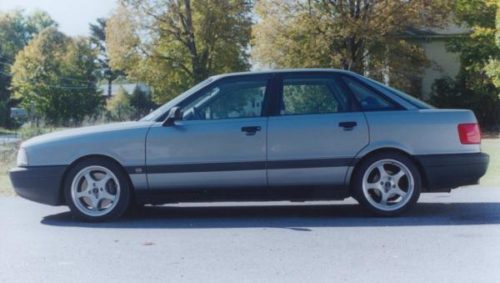
Audi 80 - problems and breakdowns
Although not without its problems, Audi traverses many thousands of kilometers and manages well after many years. This is largely due to the galvanized body, which effectively resists corrosion. However, its rigidity is problematic; dynamic driving style, fast acceleration, braking, cornering at high speed can cause the windshield to leak over time.
Side door seals are also damaged - in most cases before 1992, when you drive at higher speeds, the characteristic whistling of the wind entering the interior bothers you. Additional noises also occur around the door locks, which clearly act on uneven surfaces. Sometimes it helps to periodically adjust the locks.
Engine and suspension are eternal constructions. The fact that "eighty" monitors the oil leakage from the powertrain, but is usually not large and allows for easy removal.
Engines equipped with a carburetor can have problems with automatic drying - this is usually due to a worn actuator. Although the carburetor is quite complicated and requires occasional adjustments (many "80" engines are, however, equipped with fuel injection), in addition, working with the 1,8 engine is simple. The valve clearances are hydraulically adjustable and the lifts can withstand more than 200.000 km. Access to the equipment thanks to the longitudinally mounted engine is simply perfect.
The drive unit withstands high mileage. General repairs are usually performed after 350-500 thousand km. Earlier, you can take care of the condition of the turbine, water pump, alternator, as well as the clutch. Only the periodic replacement of the timing belt should be shortened to 60 thousand km, because there are cases of its rupture. Before purchasing, we recommend that you carefully check the condition of the steering wheel and power steering pump. Both components are very expensive.
When buying an Audi 80, pay attention to
- automatic transmission, it is recommended to use synthetic oil
- this car often had problems with cold start of the engine
- the fuel gauge could get stuck
- fuel pump, loss may indicate that there is a blockage in the fuel distribution (this problem was solved on later models)
- Exterior mirrors, turning slightly on earlier models. They need to be changed for more redesigned ones.
- taillights stop working due to corrosion on el. compositions
Conclusion:
All in all, the Audi 80 is a good car that offers steady driving, satisfying cornering behavior, decent comfort and strong and safe brakes. Former owners point out that they are satisfied with the quality of workmanship and reliability.
Recommendation of similar texts:

Hi there, I am Mladen and I am an auto enthusiast. I started this blog years ago to help like minded people share information about latest cars, car servicing ideas, used car info, exotic cars, and auto technology. You will find helpful articles and videos on a wide variety of cars - Audi, Mercedes, Toyota, Porsche, Volvo, BMW and much more. Ping us if you have anything cool to share on latest cars or on how to make older cars more efficient, or just want to say hi!

